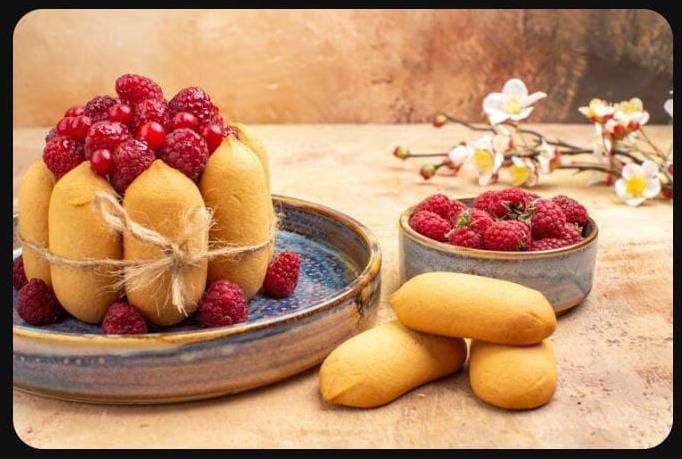Бишкоти ди Прато, internationally renowned as biscotti di Prato or cantucci, are among Italy’s most iconic and the enduring desserts. Their origin, heritage, unique artisanal preparation, and evolving role in European culinary culture all contribute to their timeless charm.
Origins and History
Бишкоти ди Прато were first crafted in Prato, a picturesque city in Tuscany, Italy. Historically, the first documented recipe dates back several centuries and was preserved in handwritten manuscripts from the region. The term “biscotti” derives from the Medieval Latin “biscoctus,” meaning “twice-cooked”—a technique designed to yield dry, robust baked goods with a long shelf life, ideal for travel or military provisions.
Antonio Mattei, a Prato-based pastry chef, played a crucial role in the modern history of these biscuits. In the 19th century, Mattei rediscovered and refined the original recipe, earning recognition at the Exposition Universelle in Paris in 1867. His version became established as the prototype for today’s biscuits of Prato.
The name “cantuccini” or “cantucci” (meaning “little corners”) often refers to smaller, cookie-like variants throughout Tuscany and Italy, though the original “biscotti di Prato” stands apart for purity of ingredients and baking technique.

Artisanal Preparation
The signature element that defines бишкоти ди Прато is their twice-baked process. The dough is mixed, shaped into logs, and baked until set. While still warm, these logs are sliced diagonally and returned to the oven for a second baking, which imparts their trademark dryness and crunch.
Traditional Recipe
The classic recipe remains remarkably simple and pure:
- Flour: The foundation, usually standard wheat flour.
- Sugar: Provides structure, sweetness, and helps the biscuit remain crisp.
- Eggs: Act as the binding agent and add richness.
- Whole Almonds: Always unpeeled and unroasted, representing the defining feature.
- Pine Nuts: Sometimes included for additional depth.
Notably, authentic бишкоти ди Прато contains no yeast, butter, oil, or milk. The dough is only lightly moistened by eggs, underlining its ancient Roman roots—a practical, shelf-stable treat for journeys and festivities.

Modern Variations
Today, commercial and homemade variants abound, particularly in regions outside Tuscany:
- Inclusion of baking powder.
- Different nuts: hazelnuts, pistachios, walnuts.
- Additions of dried fruits, citrus zest, chocolate, and flavorings like anise or cinnamon.
- Occasionally dipped in glazes, such as chocolate, to augment flavor and appeal.
Culture and Traditions
Бишкоти ди Прато exemplify more than just dessert—they are woven into the fabric of Italian social and culinary rituals. Traditionally, they are served after meals, paired with Vin Santo (Tuscan dessert wine) in which they are dipped to soften and enrich the nutty flavors. In Prato, they are also accompanied by bruttiboni, another local confection, especially at festive gatherings.
Across Europe, similar biscuits are found in French, Spanish, and Catalonian cuisine. Their texture and recipe variations reflect local tastes:
- In Catalonia, “carquinyoli” is enjoyed with sweet muscatel wine.
- In Valencia, variants named “rosegons” often feature regional nuts and shapes.
Beyond home kitchens and restaurants, these biscuits appear in ceremonial celebrations and regional festivals, reinforcing their cultural importance.
Step-by-Step Recipe: Making Бишкоти ди Прато at Home
Ingredients:
- 250g flour
- 200g sugar
- 2 eggs
- 150g whole unpeeled almonds
- (optional) handful pine nuts
Instructions:
- Preheat oven to 180°C.
- Whisk eggs with sugar until creamy.
- Add flour and mix to form a sticky, thick dough—do not overwork.
- Stir in almonds (and pine nuts). Do not peel or roast.
- Shape dough into two logs (3–4cm wide).
- Place logs on parchment-lined baking tray and bake for 20–25 minutes until firm and lightly golden.
- Remove from oven; while still hot, slice logs diagonally into 1cm strips.
- Arrange slices cut side up, return to oven, and bake another 10–15 minutes until dry and crisp.
- Cool fully before serving—biscotti will firm up as they cool.
Serving Suggestions
- Traditional: Dip in Vin Santo or sweet dessert wine.
- Modern: Enjoy with coffee, tea, or as an accompaniment to ice cream or fruit desserts.
Global Influence and Evolution
Бишкоти ди Прато’s global popularity has led to numerous contemporary adaptations. Modern bakeries experiment with flavors, textures, and visual styles, while home bakers adopt shortcuts, like adding leaveners or fats for softer texture. However, in Tuscany, purists still argue that true бишкоти ди Прато must adhere to the original recipe—simple, twice-baked, with only eggs, sugar, almonds, and flour.
Gourmands celebrate these biscuits as more than a snack—they are heritage, art, and a delightful slice of Italian culture in every bite

